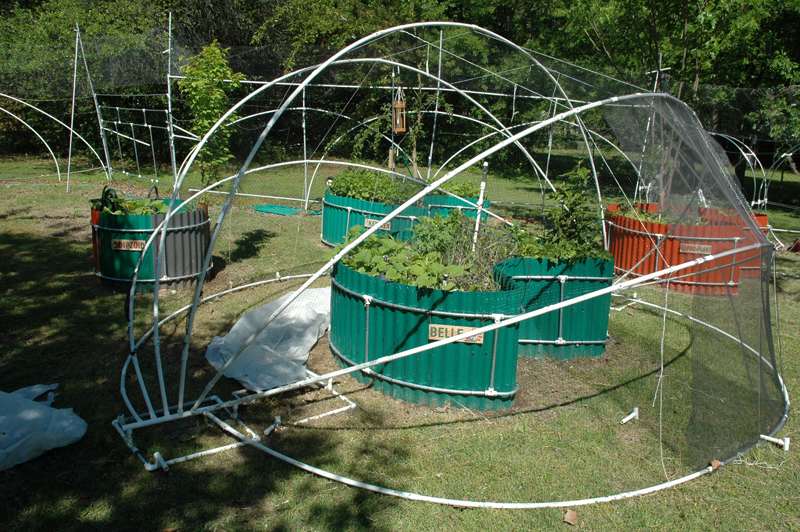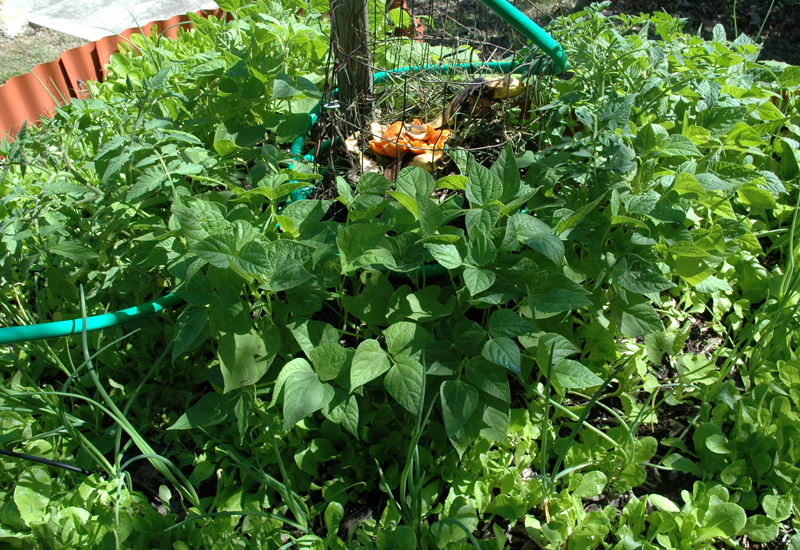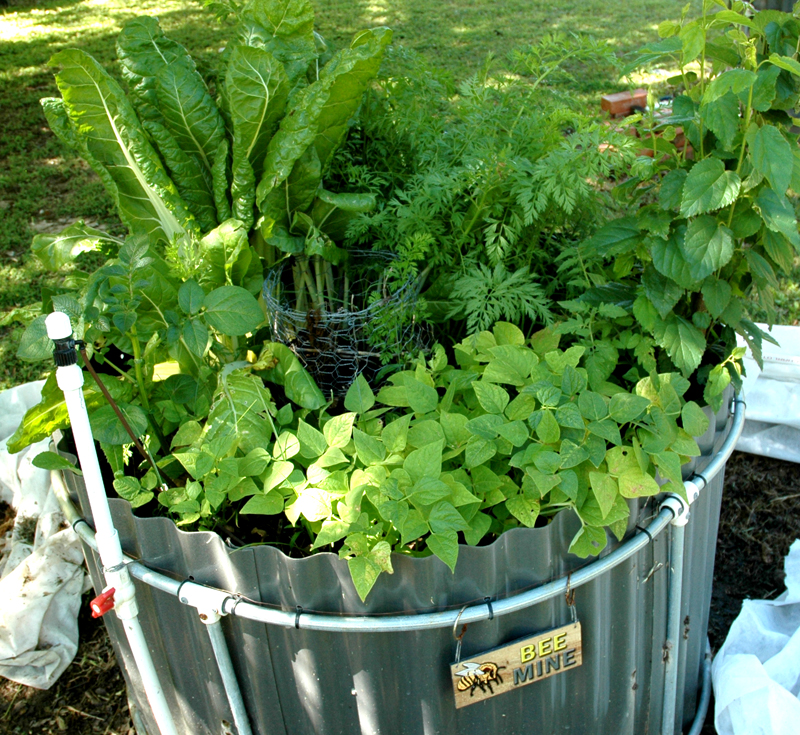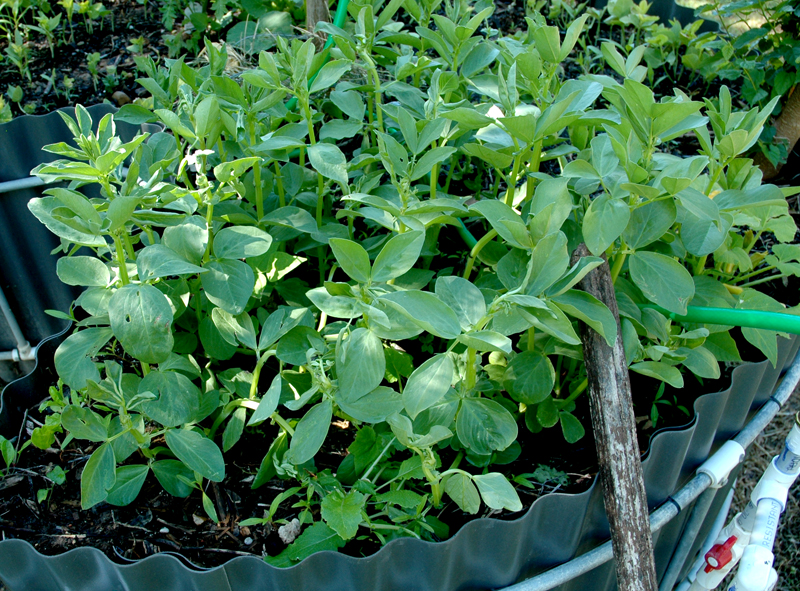 We have survived two hailstorms this spring already, but our keyhole gardens are doing quite well. Most of the planting was done in mid-March, so you can see that everything planted is pretty much on schedule.
We have survived two hailstorms this spring already, but our keyhole gardens are doing quite well. Most of the planting was done in mid-March, so you can see that everything planted is pretty much on schedule.
 Dr. Deb’s (Tolman) silo project tour near Clifton was held this past Saturday during a rainstorm, but she says the turnout was tremendous. Several people stopped by on their way home to see our keyhole gardens that are made from the keyhole garden kits that we manufacture and offer to the public.
Dr. Deb’s (Tolman) silo project tour near Clifton was held this past Saturday during a rainstorm, but she says the turnout was tremendous. Several people stopped by on their way home to see our keyhole gardens that are made from the keyhole garden kits that we manufacture and offer to the public.
 I think they were amazed at our newest invention, a retractable net that was demonstrated on one of our keyhole gardens.
I think they were amazed at our newest invention, a retractable net that was demonstrated on one of our keyhole gardens.
Our kits come in two sizes, the original six-foot-wide version and a 42-inch diameter version for smaller spaces. I would like to remind persons interested in keyhole gardens that it is important that the gardens are circular in shape for optimum transmission from the internal feeding basket. We have seen several “keyhole gardens” offered that are not circular, but instead are more like just a typical raised bed with a basket inside it. The circular shape is important for the near-perfect system to work correctly.
 As mentioned in a previous update, we planted some dwarf mulberry trees in our keyhole gardens about two or three years ago. The originals were about the side of a fist, maybe smaller. Now they have grown immensely and are filled with mulberries. A photo shows a branch or two that are loaded! At the same time as the keyhole garden planting, we situated one in the ground nearby. The keyhole garden version is winning hands-down in both size and production.
As mentioned in a previous update, we planted some dwarf mulberry trees in our keyhole gardens about two or three years ago. The originals were about the side of a fist, maybe smaller. Now they have grown immensely and are filled with mulberries. A photo shows a branch or two that are loaded! At the same time as the keyhole garden planting, we situated one in the ground nearby. The keyhole garden version is winning hands-down in both size and production.
 This spring season, we planted a large variety of crops: chard, spinach, beans, squash, zucchini, jalapeno peppers,black-eyed peas, onions, tomatoes, potatoes, watermelons, cantaloupes, giant sunflowers, carrots, and lettuce, to name a few. Our keyhole gardens are looking lush and should provide plenty of product during the weeks ahead.Come mid-to-late-May a few crops typically complete their cycle, so we replace them with more black-eyed peas and with okra, plus maybe some more green beans and other seeds we want to try.
This spring season, we planted a large variety of crops: chard, spinach, beans, squash, zucchini, jalapeno peppers,black-eyed peas, onions, tomatoes, potatoes, watermelons, cantaloupes, giant sunflowers, carrots, and lettuce, to name a few. Our keyhole gardens are looking lush and should provide plenty of product during the weeks ahead.Come mid-to-late-May a few crops typically complete their cycle, so we replace them with more black-eyed peas and with okra, plus maybe some more green beans and other seeds we want to try.
 As a note, it is never too late to order a keyhole garden kit since there are four growing seasons a year. Certain crops prefer a particular climate to match spring, summer, fall, or winter. Backyard keyhole gardens are worthwhile, too, in teaching youngsters the magic and adventure of raising their own crops, and experience that will stay with them always.
As a note, it is never too late to order a keyhole garden kit since there are four growing seasons a year. Certain crops prefer a particular climate to match spring, summer, fall, or winter. Backyard keyhole gardens are worthwhile, too, in teaching youngsters the magic and adventure of raising their own crops, and experience that will stay with them always.
Also, please check out our book, Plant Your Garden In A Keyhole, available from Amazon.